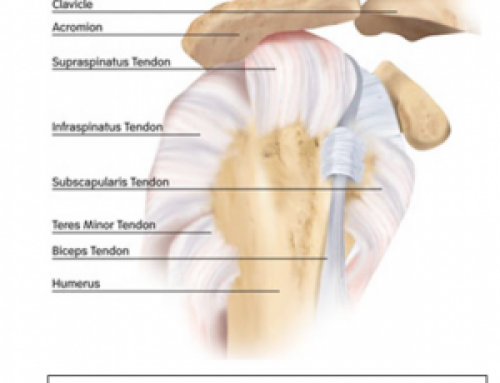Rotator Cuff Repair
The shoulder has four muscles that comprise the rotator cuff. These are the supraspinatus, infraspinatus, teres minor and the subscapularis. A rotator cuff tear is the injury that results when one or more of the tendons of the muscles forming the cuff are damaged. It may be partial or complete. The tears are common among athletes whose sport require overhead activity such as baseball and cricket players resulting in a great deal of headache for the players. The disease is also common with advanc ing age but can also occur after trauma.
ing age but can also occur after trauma.
Affected individuals complain of night pain and difficulty sleeping on the affected side. The shoulder pain worsens with activity and there may be tenderness over the affected region. The patient may also complain of weakness and loss of motion especially when performing overhead activities. However, the condition may be asymptomatic. Unfortunately, rotator cuff tears do not have the ability to heal themselves and intervention is mandatory.
The diagnosis is made through history and physical exam coupled with appropriate investigations. A plain radiograph, an MRI and an arthrogram are common investigations that are ordered.
Traditionally, rotator cuff tears can be managed conservatively or through surgery. In partial tears, the treatment is non operative. The patient goes through six weeks of physical therapy and receives 2 steroid injections into the affected joint. Surgery is only an option once rigorous conservative management has failed. Surgery is the only treatment option for acute and complete tears occurring in healthy individuals. If comorbidities preclude a patient from surgery, the tears are managed conservatively.
The surgery can either be an open rotator cuff surgery, a mini open repair or an arthroscopic rotator cuff repair. General anesthesia or local anesthesia is given before the surgery.
Rotator cuff tear can be repaired using the three techniques:
 Open repair: Usually done in patients who have complex or large tears a large surgical incision is made to remove a large muscle and then the surgery is performed.
Open repair: Usually done in patients who have complex or large tears a large surgical incision is made to remove a large muscle and then the surgery is performed.
Arthroscopy: A small incision is made to insert an arthroscope that is connected on one end to a video monitor. The surgeon is able to see the inside of the shoulder and do the surgery.
Mini-open repair: An arthroscope is used to remove or repair any bone spur or damaged tissue and then a small incision is made and the rotator cuff is repaired.
The mini open repair technique utilizes an incision of two inches compared to five inches used in the open repair technique. Arthroscopy utilizes incisions of up to 0.5 inches. It has the best cosmetic outcome but is more difficult because of the limited view of the operating field and is not suitable for repair of all types of rotator cuff tears. Recent studies have demonstrated that arthroscopic repair are associated with a lower occurrences of post operative stiffness and patients exhibited a quicker return of overall function. Early repair of a tear is also a major determinant of the overall outcome. When left alone, a tear can progress and get to a point where it is irreparable, which is quite an expensive price to pay for the delay.
Incisions are put at the end of the procedure and a dressing is placed on the wound.
Risks of rotator cuff repair surgery
There are the usual risk of anesthesia including difficulty in breathing and allergy to the medicines. The other risks of rotator cuff repair surgery are infection of the wound, bleeding and injury to a nerve of blood vessel during the procedure.
The top shoulder specialist in Los Angeles and Beverly Hills is Dr. Raj at Beverly Hills Orthopedic Institute. Receive treatment from the best orthopedic doctor in Los Angeles, call today.



